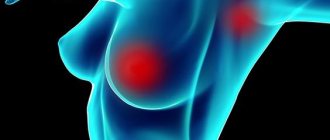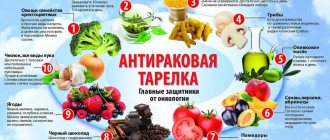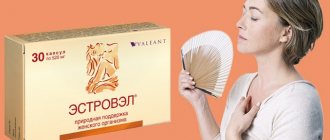What is indinol, indole-3-carbinol, diindolylmethane
Advance Physician Formulas Indole-3-Carbinol, 200 mg, $12.77 for 60 Capsules
Indole-3-carbinol (I3C) is a naturally occurring substance found in cruciferous vegetables. Due to its possible antioxidant, anti-inflammatory, antitumor, anti-apoptotic and anti-atherogenic properties, indole-3-carbinol is the main active ingredient in dietary supplements to support health in fibrocystic mastopathy, endometriosis, uterine fibroids, adenomyosis, as well as in genital diseases associated with the emergence of human papillomavirus.
Recent studies are aimed at assessing the possible effects of I3C on various organs of the body, including the heart, liver, kidneys and endocrine system.
Diindolylmethane (DIM) is the main metabolite of indole-3-carbinol (I3C), which is a substance with potential antitumor, anti-inflammatory and chemopreventive properties. Diindolylmethane is also formed from indole-3-carbinol under the influence of gastric juice and is considered a more progressive substance compared to its predecessor.
DIM-200 from Now Foods, 200 mg, $17.97 for 90 capsules
Epidemiological evidence suggests that high dietary intake of cruciferous vegetables such as broccoli, cabbage and Brussels sprouts protects against several types of cancer. DIM is one of the most promising antitumor agents derived from these vegetables.
The US National Cancer Institute has conducted several pilot trials of DIM as a therapeutic agent for the treatment of numerous forms of cancer.
DIM and I3C are currently used as adjunctive therapy in people with the rare respiratory disease caused by HPV (respiratory papillomatosis) to prevent its recurrence after surgery.
Indinol is a Russian-made food additive (BAA), the main active ingredient of which is indole-3-carbinol.
Pharmacokinetics
Indinol Forto belongs to the pharmacological group of non-toxic drugs. The medication is taken orally, and the dissolution of the capsule with the release of the active substance occurs in the large intestine.
The constituent components of the drug penetrate the bloodstream, along with which they enter the tissues of the reproductive system and endocrine glands.
The final stage of metabolic breakdown of the drug components occurs in the liver. About 95% of the components of the drug are excreted by the kidneys along with urine. The remaining metabolites are eliminated from the body as part of the feces.
Indinol is a dietary supplement (dietary supplement) of plant origin with antitumor and antiestrogenic activity, the main ingredient of which exhibits the properties of a universal corrector of hyperplastic pathological processes occurring in the tissues and organs of the female reproductive system (including the cervix, mammary gland, ovaries, myometrial and endometrial tissue).
Taking capsules of the drug helps normalize the estrogen balance in the female body, inhibits the negative stimulating effects of estrogens, and also acts as a blocker of other mechanisms (hormone-independent), which are activators of pathological cell growth in the uterine tissues and breast tissues.
The effectiveness of Indinol is observed in therapy aimed at suppressing the growth of epithelial tumors of the female reproductive system, including estrogen-dependent formations. The positive effect of the drug is observed when it is used against negative hyperplastic processes occurring in the female reproductive organs, which occur when there is a violation of the regulation of cell division.
Also, taking the drug is quite productive in the treatment of infectious pathologies associated with human papillomavirus. In this case, the action of the dietary supplement is aimed at blocking the synthesis of the E7 oncoprotein in papillomavirus-infected epithelial cells, which leads to inhibition of the processes of malignancy.
Research on indole-3-carbinol
Research on the properties of indole-3-carbinol, in my opinion, is one of the most extensive in the world of food additives. Most universities in the world pay attention to this substance in one way or another. Most often, research concerns the effect of indole-3-carbinol on cancer cells. Despite several major findings, indole-3-carbinol still cannot be recommended as a drug. And throughout the world (except for the Russian Federation) it has the status of a food additive, the use of which must be monitored by the attending physician.
This is due to some concerns that were confirmed in in vivo studies (back in the early 2000s). Indole-3-carbinol has been shown to arrest the development of certain types of cancer when administered before or in parallel with the carcinogen. At the same time, the entry of a carcinogen into the body subsequently stimulated the development of carcinogenesis. Therefore, to date, indole-3-carbinol supplements have been used with some caution (but are used) in cancer treatment protocols.
I suggest you familiarize yourself with the most significant publication dated June 1, 2020 on this topic, which brings together 75 studies conducted between 1983 and 2020.
Research Links
The article can be translated quite well using Google Translator.
https://www.ncbi.nlm.nih.gov/pmc/articles/PMC5989150/
About possible problems that may arise when consuming indole-3-carbinol:
https://www.ncbi.nlm.nih.gov/pubmed/9566721
https://www.ncbi.nlm.nih.gov/pubmed/12628524
I also really like the article published on the University of Oregon website. It combines the findings of 114 scientific publications. This article is kept up to date.
https://lpi.oregonstate.edu/mic/dietary-factors/phytochemicals/indole-3-carbinol
Use google translator to get acquainted.
Application of indole-3-carbinol (diindolylmethane, indinol)
Insufficient evidence
All health benefits of indole-3-carbinol are supported by limited, low-quality clinical trials and animal and cell studies. There is insufficient evidence to support the use of DIM and I3C. Be sure to talk to your doctor before taking DIM or I3C, and never use them as a replacement for drug therapy.
Cancer Prevention
- Cervical cancer
In a clinical trial in 64 women with abnormal cell growth on the lining of the cervix that can develop into cervical cancer (cervical intraepithelial neoplasia I-II), oral DIM reduced tissue damage and reduced the need for surgery. However, it was unable to solve this problem and prevent HPV infections in another study of more than 500 women.
Intravaginal DIM suppositories were more effective in another study of 78 women.
Its precursor, I3C (given orally), helped prevent abnormal cell growth but did not help with HPV infection in a clinical trial of 30 women. In cell studies, DIM prevented the growth of cervical cancer cells, promoted their death, and increased their sensitivity to radiation therapy.
- Mammary cancer
A meta-analysis of 13 studies and nearly 19,000 women linked consumption of cruciferous vegetables such as broccoli, Brussels sprouts and cabbage to a reduced incidence of breast cancer. This effect may be due to the antiestrogenic effect of I3C.
Both DIM and I3C reduced the risk of breast cancer by preventing the formation of active estrogen hormones (oxidation of estrone to 2-hydroxyestrone) in 4 clinical trials in nearly 200 women.
In a clinical study of 18 women with a mutation that increases the risk of breast cancer (BRCA1), oral DIM activated the mutant gene, possibly helping prevent breast cancer.
In animal and cellular studies, DIM reduced breast cancer cell growth, promoted cell death, and prevented tumor spread.
- Prostate cancer
In 2 experimental studies of more than 150 people with prostate cancer who had undergone tumor removal, taking DIM before surgery reduced the activation of a gene that promotes prostate cancer growth (EZH2) in tumor tissue and prevented the formation of active estrogen hormones (by oxidizing estrone to 2 -hydroxyestrone).
DIM induced prostate cancer cell death and stopped their growth in mice and in cell studies.
- Thyroid cancer
Women are more prone to thyroid cancer because thyroid cells respond to estrogens. In a pilot study of 7 women with abnormal thyroid cell growth that can develop into thyroid cancer (proliferative thyroid disease), DIM prevented the formation of active estrogen hormones (by stimulating the oxidation of estrone to 2-hydroxyestrone).
In cells, DIM prevented the formation of new blood vessels, which is necessary to reduce tumor growth.
- Liver cancer
Consumption of cruciferous vegetables such as broccoli, Brussels sprouts and cabbage has been associated with a reduced incidence of liver cancer in many studies.
In one study in mice with liver cancer, DIM prevented cancer cells from spreading and invading other tissues.
Thus, limited evidence suggests that DIM and I3C help prevent cancer (especially estrogen-responsive types). However, it is not enough to draw a definitive conclusion until more research is carried out. It is important to note that never use DIM or any other supplements in place of proven anti-cancer treatments.
Respiratory papillomatosis
Respiratory papillomatosis is a rare disease in which the human papillomavirus (HPV) infects the respiratory tract and causes the growth of warts. Although not FDA approved, DIM and I3C are commonly used as adjunctive therapy to prevent recurrence of this condition.
I3C, as an adjunct to an intravenous antiviral drug (Cidofovir), resolved respiratory papillomatosis over a 27-month period in an 8-year-old girl.
Clinical trials and case studies alone are clearly not enough to make the use of DIM and I3C global. Larger, more robust clinical trials are needed to confirm these preliminary results.
Liver protection
DIM has antifibrotic, antitumor, antioxidant, immunomodulatory, detoxifying and anti-inflammatory effects on liver protection. It also reduces microbial damage to the liver.
In one study, DIM blocked the metastasis of hepatocellular carcinoma (HCC) cells by inhibiting tumor cell migration and invasion in mice.
Diindolylmethane can effectively suppress acute liver inflammation caused by staphylococcal enterotoxin B (SEB), and thus reduce SEB-mediated liver injury in mice.
Radiation sickness
People receiving radiation therapy often experience a decrease in the number of blood cells due to the effects of radiation on the bone marrow. In mice, DIM reduced this negative effect of radiation.
Narrowing of the arteries
When the lining of blood vessels is damaged (for example, from a catheter), growing new tissue to repair the damage can cause the arteries to narrow and increase the risk of heart disease. In mice with this type of damage in their arteries, DIM reduced cell growth and inflammation.
Obesity
In obese mice fed a high-fat diet, I3C injections reduced body weight, fat accumulation, and inflammation.
Recommended dosage and duration of use
Because DIM is not approved to treat any medical conditions, there is no official dosage. Users and supplement manufacturers have established unofficial doses based on trial and error. Discuss with your doctor whether DIM or I3C may be useful as an adjunctive approach in your case and what dose you should take.
Studies have shown that indole-3-carbinol and diindolylmethane are well tolerated at dosages of 200 to 800 mg. In this case, pronounced side effects are observed when taking 800 mg per day, after which the dosage is usually revised.
Most often, doctors prescribe about 400 mg per day.
The course of treatment is 4-6 months. Then you need to take a break for at least 2 months and you can start a new course. In any case, your doctor’s recommendations should come first.
Food additives: indinol and others
Additives based on indole-3-carbinol
Today there is a huge selection of dietary supplements, the main active ingredient of which is indole-3-carbinol.
In Russia
For clarity, a comparison table of the main Russian drugs based on indole-3-carbinol.
| Name | Indinol | Indinol Forto | Indole Forte |
| Manufacturer | MiraxBioPharma/Biosphere | JSC MiraxBioPharma | FC "Evalar" |
| Compound | indolecarbinol (intrinol) – 0.300 g; excipients: lactose monohydrate (milk sugar) – 0.140 g, modified corn starch – 0.095 g, microcrystalline cellulose – 0.064 g, magnesium stearate -0.001 g, gelatin capsule (capsule body: gelatin – up to 100%, purified water – 14-15 %, titanium dioxide E 171 – 2.1128%; capsule cap gelatin – up to 100%, purified water – 14-15%, titanium dioxide E 171 – 2.4375%, sunset yellow dye E 110 – 0.108%) | indolecarbinol (intrinol) – 0.200 g; excipients: lactose monohydrate (milk sugar) – 0.140 g, modified corn starch – 0.095 g, microcrystalline cellulose – 0.064 g, magnesium stearate -0.001 g, gelatin capsule (capsule body: gelatin – up to 100%, purified water – 14-15 %, titanium dioxide E 171 – 2.1128%; capsule cap gelatin – up to 100%, purified water – 14-15%, titanium dioxide E 171 – 2.4375%, sunset yellow dye E 110 – 0.108%) | indole-3-carbinol, broccoli concentrate, capsule (gelatin, color: titanium dioxide), microcrystalline cellulose (carrier); calcium stearate and amorphous silicon dioxide (anti-caking agents) |
| Active ingredient content | 300 mg | 200 mg | 100 mg |
| Number of capsules per package | 60/120 capsules | 60 capsules | 30 capsules/60 capsules |
| Dosage | 1 capsule 1-2 times a day | 1 capsule 2 times a day | One capsule 1 time per day |
| Average price in pharmacies | 1155 rubles 60 capsules/2118 rubles 120 capsules | 2434 rubles | 527 rubles 30 capsules/892 rubles 60 capsules |
Mabustin
Recently a drug called Mabusten appeared on the market. It is notable for its absolutely hellish composition and unrealistic cost.
The composition of mabustin is epic:
– indole-3-carbinol 99%, (Indole-3-Carbinol 99%) – 20 mg
– iodine in bound form – 50 mcg
– sacred chasteberry (Vitex trifolia L.) – 50 mg
– excipients: MCC, calcium stearate, PVP, Tween-80, MC-16, titanium dioxide, E 141.
The package contains 20, 30, 40, 50 or 60 tablets with a total cost of 1363 to 4038 rubles per package.
For some reason, this drug reminded me of the grandiose “scams” of past years - Blossomsib extract, Arbidol, etc. These are exactly the same associations: a dummy for a lot of money.
This drug is not sold in pharmacies, only on a special website (easily google it if necessary).
You understand that an amount of 20 mg of indole-3-carbinol is the same as eating a small sprig of broccoli: there will be no effect. Iodine is a rather specific substance that can cause allergies (like me, for example) and cannot be used by people with thyroid diseases. Vitex sacred is a very good supplement, but its quantity is also minimal and will not have any effect.
IN THE USA
Unfortunately, there won't be a table here, because... There are quite a lot of such additives.
I will place these dietary supplements in the form of cards with basic information about the drug (all pictures are clickable - you will be taken to iHerb, where you can read a detailed description, reviews and buy what you like).
| Now Foods Indole-3-Carbinol, 200 mg, $15.58 for 60 capsules | Advance Physician Formulas Indole-3-Carbinol, 200 mg, $12.77 for 60 capsules |
| Thorne Indole-3-Carbinol, 200 mg, $31.00 for 60 capsules | LifeExtention Cruciferous Extract with Resveratrol, 80 mg, $24.00 for 60 Capsules |
More indole-3-carbinol supplements on iHerb
Additives based on 3,3′-Diindolylmethane (DIM) – 3,3′-Diindolylmethane (DIM)
To date, I do not know of a single drug produced in the Russian Federation with this active ingredient. However, in the USA this additive is very common. It is used in the same cases as indole-3-carbinol. But its main use is the treatment (maintenance of remission) of breast cancer, especially in postmenopausal women.
Here I also use visual pictures with basic information (clickable).
| DIM-200 from Now Foods, 200 mg, $17.97 for 90 capsules | Source Naturals DIM, 200 mg, $23.45 for 60 tablets |
| Mason Natural DIM, 100 mg, $10.23 for 60 capsules | Olympian Labs DIM, 150 mg, $14.19 for 30 capsules |
More 3,3′-Diindolylmethane (DIM) supplements on iHerb
Operating principle
Indinol Forto is a non-hormonal estrogen receptor inhibitor. That is, it acts on the receptors, as a result of which estrogen production decreases. The drug destroys estrogen receptors on tissue surfaces, and they are frequent targets for the development of tumor processes.
Thus, by reducing estrogen synthesis, Indinol reduces cellular activity to uncontrolled division, which means the risk of malignancy, as well as the rapid development of the pathological process, is reduced.
Indinol: reviews
If you've ever been interested in dietary supplements, you know that reviews about them range from enthusiastically positive opinions to negative ones. Why is this happening? The fact is that each person’s body is unique and different drugs and medicines act completely differently on each of us. For example, someone suffers from a terrible allergic reaction to antibiotics, while another takes them with or without reason, without feeling any discomfort. It’s the same with dietary supplements. Each of our bodies perceives nutritional supplements in a completely unique way. This is why dietary supplements do not receive the status of medicines - clinical trials do not lead to clear conclusions.
We can say that everyone should try to maintain their health in any way available to them. If a dietary supplement has a positive effect on your body, then what else will you need? If supplements do not solve the problem, you can stop taking them and try an alternative solution.
On the Internet, I read a huge number of laudatory reviews about indinol, and the same number of negative ones.
For my part, I can say that I periodically drink a package of indole-3-carbinol. I did not notice any changes in the size or number of formations (fibroadenomas), but I noticed the complete absence of pain in the chest, which previously haunted me almost constantly. Perhaps this is due to the fact that the use of indol (indole) never lasted more than 2 months with the recommended courses of 6 months.
In any case, first of all, you should follow the recommendations of your doctor.
Drug interactions
In rare cases, taking the medications indinol and indinol forto can cause the following side effects:
- nausea, diarrhea in adults;
- insignificant change in body weight;
- change in the duration of the monthly cycle, both upward and downward;
- itching, skin rash, anaphylactic shock.
There have been no cases of drug overdose; however, failure to follow the doctor’s recommendations regarding the dosage of the drugs may lead to side effects that may require symptomatic treatment.
Correcting hyperplastic pathological processes occurring in the tissues and organs of the woman’s reproductive system.
The parallel use of capsules of this dietary supplement and medications that reduce gastric acidity is not recommended.
Indolecarbinol, which is the active substance of Indinol Forto, is not recommended for simultaneous use with drugs of the following pharmacological groups:
- glucocorticosteroids;
- hypoglycemic and antiarrhythmic drugs;
- antiepileptic drugs;
- preparations based on digitalis;
- anticoagulants;
- medications containing male or female sex hormones.
If a woman is taking at least one of the above drugs, then it is necessary to notify the attending physician who prescribed a course of therapy with Indinol Forto capsules.










